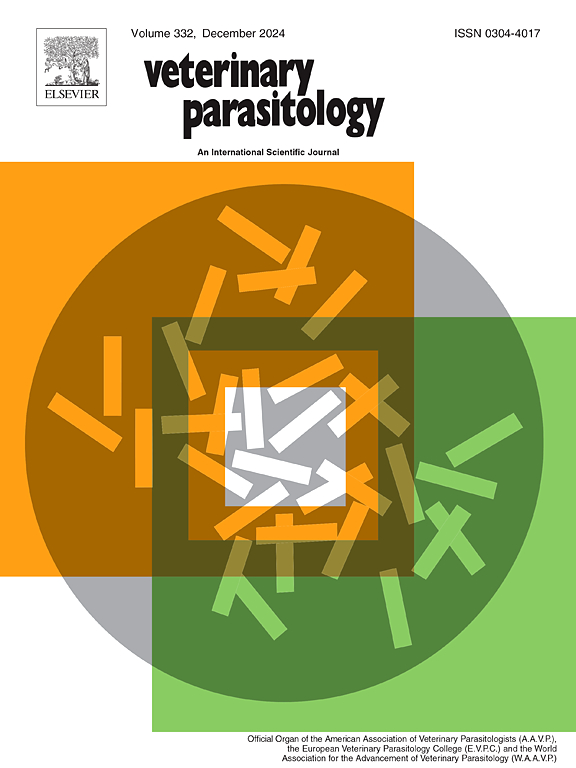纳米技术:对抗水产养殖系统中鱼类寄生虫的途径。
IF 2
2区 农林科学
Q2 PARASITOLOGY
引用次数: 0
摘要
近年来,随着水产养殖业的不断发展,由细菌、病毒和寄生虫引起的传染性鱼病日益增多。寄生虫病尤其普遍,对全球经济造成重大影响。这些疾病主要由原生动物寄生虫(如 Ichthyophthirius multifiliis 和 Trichodina sp.)、粘孢子虫(刺胞虫)、单基因虫(如 Dactylogyrus sp.和 Gyrodactylus sp.)以及甲壳类寄生虫(如 Argulus sp.和 Lernaea cyprinacea)引起。尽管在了解和治疗这些疾病方面取得了进展并采用了新技术,但寄生虫仍是水产养殖业的一大健康挑战。传统的抗寄生虫药物面临抗药性和对非目标生物的负面影响等限制。最近,纳米技术已成为水产养殖医学中的一种新方法,可开发出有效的纳米颗粒来对抗病原微生物。银纳米粒子(AgNPs)因其广泛的作用机制而具有强大的抗菌和抗寄生虫特性,尤其引人注目。虽然箭毒是一种破坏性很强的甲壳类寄生虫,给养鱼户带来了沉重的经济负担,但在水产养殖中应用纳米颗粒来控制这种感染的研究仍然不足。因此,这篇综述探讨了最近利用 AgNPs 防治寄生虫病的努力,并研究了其潜在的杀寄生虫作用机制,提出将其作为一种新型工具,可改善弓形虫病的管理和控制。文章强调了这一技术的益处和挑战,强调了其在促进改善健康管理以实现可持续水产养殖方面的重要意义。本文章由计算机程序翻译,如有差异,请以英文原文为准。
Nanotechnology: An avenue for combating fish parasites in aquaculture system
The intensification of aquaculture in recent years has led to the rise of infectious fish diseases caused by bacteria, viruses, and parasites. Parasitic diseases, in particular, are widespread and have significant economic impacts globally. Protozoan parasites like Ichthyophthirius multifiliis and Trichodina sp., myxozoans (cnidarians), monogeneans like Dactylogyrus sp. and Gyrodactylus sp., and crustacean parasites like Argulus sp. and Lernaea cyprinacea primarily cause these diseases. Despite advancements and new technologies aimed at understanding and treating these diseases, parasites remain a major health challenge in aquaculture. Traditional antiparasitic agents face limitations, including drug resistance and negative effects on non-target organisms. Recently, nanotechnology has emerged as a novel approach in aquaculture medicine, enabling the development of effective nanoparticles against pathogenic microbes. Silver nanoparticles (AgNPs) are particularly notable for their strong antimicrobial and antiparasitic properties due to their broad mechanisms of action. Although Argulus is a highly destructive crustacean parasite that financially burdens fish farmers, applying nanoparticles to manage this infection in aquaculture is still underexplored. Therefore, this review explores recent efforts to combat parasitic diseases with AgNPs and investigates their potential parasiticidal mechanisms of action, proposing them as a novel tool that could improve the management and control of argulosis diseases. The article underscores the benefits and challenges of this technology, emphasizing its significance in fostering improved health management for sustainable aquaculture.
求助全文
通过发布文献求助,成功后即可免费获取论文全文。
去求助
来源期刊

Veterinary parasitology
农林科学-寄生虫学
CiteScore
5.30
自引率
7.70%
发文量
126
审稿时长
36 days
期刊介绍:
The journal Veterinary Parasitology has an open access mirror journal,Veterinary Parasitology: X, sharing the same aims and scope, editorial team, submission system and rigorous peer review.
This journal is concerned with those aspects of helminthology, protozoology and entomology which are of interest to animal health investigators, veterinary practitioners and others with a special interest in parasitology. Papers of the highest quality dealing with all aspects of disease prevention, pathology, treatment, epidemiology, and control of parasites in all domesticated animals, fall within the scope of the journal. Papers of geographically limited (local) interest which are not of interest to an international audience will not be accepted. Authors who submit papers based on local data will need to indicate why their paper is relevant to a broader readership.
Parasitological studies on laboratory animals fall within the scope of the journal only if they provide a reasonably close model of a disease of domestic animals. Additionally the journal will consider papers relating to wildlife species where they may act as disease reservoirs to domestic animals, or as a zoonotic reservoir. Case studies considered to be unique or of specific interest to the journal, will also be considered on occasions at the Editors'' discretion. Papers dealing exclusively with the taxonomy of parasites do not fall within the scope of the journal.
 求助内容:
求助内容: 应助结果提醒方式:
应助结果提醒方式:


